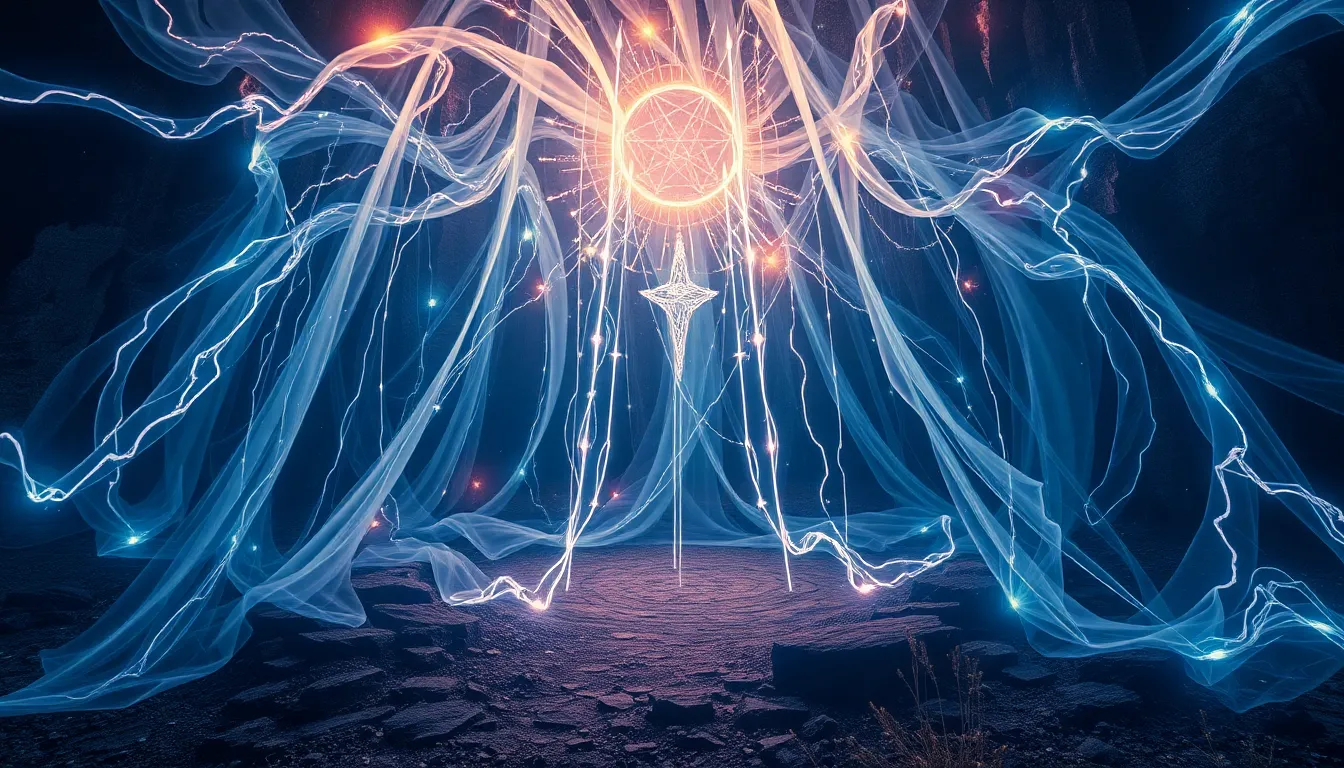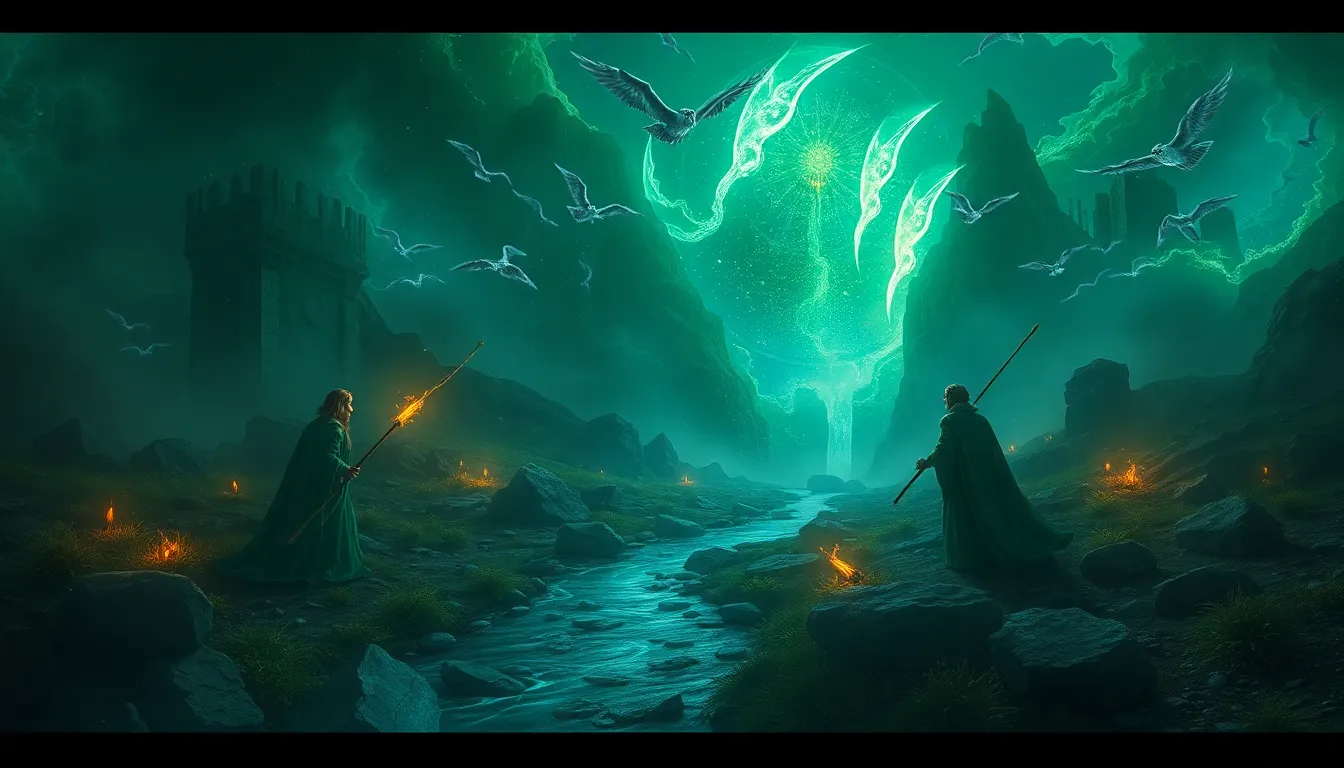The Sacred Veil: Myths Surrounding Hidden Places
Introduction to the Concept of Hidden Places
Hidden places have long captivated the human imagination, serving as symbols of mystery and allure across various cultures. Defined as locations that are concealed from the ordinary eye, these places often hold significant cultural, spiritual, or historical value. Myths and legends surrounding hidden places reflect our deepest fears, hopes, and desires, showcasing a universal longing to explore the unknown. This article delves into the myths and legends surrounding hidden places, their historical context, cultural implications, and the enduring fascination they evoke.
Historical Context of Hidden Places
Throughout history, civilizations have constructed narratives around hidden places, often using geography as a canvas to paint these tales. Ancient cultures, from the Egyptians to the Greeks, integrated the concept of hidden locations into their mythos, creating a rich tapestry of stories. Here are some notable examples:
- Egyptian Pyramids: These monumental structures were often seen as gateways to the afterlife, hidden from the unworthy.
- Greek Myths: The lost city of Atlantis, described by Plato, represents an advanced civilization that vanished, sparking numerous theories about its existence.
- Aztec Civilization: The fabled city of El Dorado, a land of immense wealth, continues to intrigue explorers and historians alike.
The geography of these civilizations played a crucial role in shaping their myths. Mountains, rivers, and deserts often served as barriers, enhancing the sense of seclusion and mystery surrounding these hidden places.
Cultural Myths and Legends
Myths associated with hidden places often reflect the societal values and fears of their time. For instance:
- Atlantis: Represents the fear of hubris and the consequences of a society that becomes too advanced for its own good.
- El Dorado: Embodies humanity’s insatiable greed and the quest for wealth, often leading to destruction and despair.
These myths serve as cautionary tales, warning societies about the dangers of ambition and the unknown. They resonate with contemporary audiences, highlighting the timeless nature of these narratives.
Sacred Sites and Their Mystique
Sacred hidden places, such as Stonehenge and Machu Picchu, embody a unique blend of mystery and spirituality. These sites often serve as focal points for cultural identity and spiritual practices. Analyzing these locations reveals how they contribute to the concept of the sacred veil:
- Stonehenge: An ancient stone circle in England, steeped in astronomical significance and rituals.
- Machu Picchu: A breathtaking Incan citadel in the Andes, often seen as a divine connection between earth and the heavens.
The interplay of spirituality and hidden places enhances their allure, inviting exploration and reverence.
The Role of Nature in Myths of Hidden Places
Natural landscapes play a pivotal role in shaping the mythology surrounding hidden places. The symbolism of forests, mountains, and caves is prevalent in folklore, often representing the unknown:
- Forests: Frequently viewed as mystical realms, forests are often depicted as places where one encounters spirits or transformative experiences.
- Mountains: Seen as sacred peaks, mountains often symbolize the connection between the earth and the divine.
- Caves: Represent hidden knowledge and the subconscious, often serving as places of initiation or transformation.
These natural elements contribute to the enigma of hidden places, inviting individuals to explore their depths and discover their meanings.
Psychological Aspects of Hidden Places
The human desire for exploration and the unknown is deeply rooted in our psyche. Hidden places evoke a sense of adventure and curiosity, prompting individuals to seek out these enigmatic locations. This exploration is often linked to:
- Identity: Discovering hidden places can lead to personal revelations and a deeper understanding of one’s self.
- Belonging: Engaging with myths and legends surrounding hidden places fosters a sense of connection to culture and history.
As we navigate these hidden realms, we confront our fears and aspirations, enriching our understanding of both the world and ourselves.
Modern Interpretations and Adaptations
In contemporary literature and media, myths of hidden places have been reinterpreted and adapted to resonate with modern audiences. Films, books, and video games often draw inspiration from these legends, creating new narratives that explore:
- Adventure: Stories often center around quests to discover hidden places, emphasizing the thrill of exploration.
- Technology: The rise of virtual reality and augmented reality has provided new ways to experience these myths, blending the digital realm with the mythical.
Social media also plays a crucial role in shaping perceptions of hidden places, allowing individuals to share their discoveries and experiences, thus creating a collective narrative.
The Intersection of Science and Myth
Archaeological discoveries have both challenged and confirmed the existence of various myths surrounding hidden places. Scientific inquiry often provides a deeper understanding of these locations, allowing us to separate fact from fiction:
- Lost Civilizations: Excavations in places like the Amazon have revealed advanced societies that existed long before European contact, challenging previous assumptions.
- Scientific Exploration: Advances in technology, such as satellite imagery, have uncovered hidden sites, reinforcing the idea that many myths may have a basis in reality.
Through the lens of science, we gain a more nuanced understanding of hidden places, blending myth with history.
Preservation and Tourism of Hidden Places
The balance between accessibility and preservation of sacred sites is a pressing concern in the modern world. As tourism increases, ethical considerations arise regarding the impact on these hidden places:
- Conservation Efforts: Many organizations work to protect these sites from degradation while allowing for responsible tourism.
- Cultural Sensitivity: Engaging with local communities is essential to ensure that tourism respects cultural values and practices.
Preserving the integrity of hidden places is vital for future generations to appreciate their historical and cultural significance.
Conclusion: The Enduring Allure of the Sacred Veil
The fascination with hidden places and their myths endures through time, reflecting a deep-seated human longing for exploration, understanding, and connection. These locations serve not only as cultural touchstones but also as reminders of the mysteries that still exist in our world. As we continue to uncover the stories surrounding hidden places, we must also commit to preserving their sanctity and significance, ensuring that the sacred veil remains a source of inspiration for generations to come.




